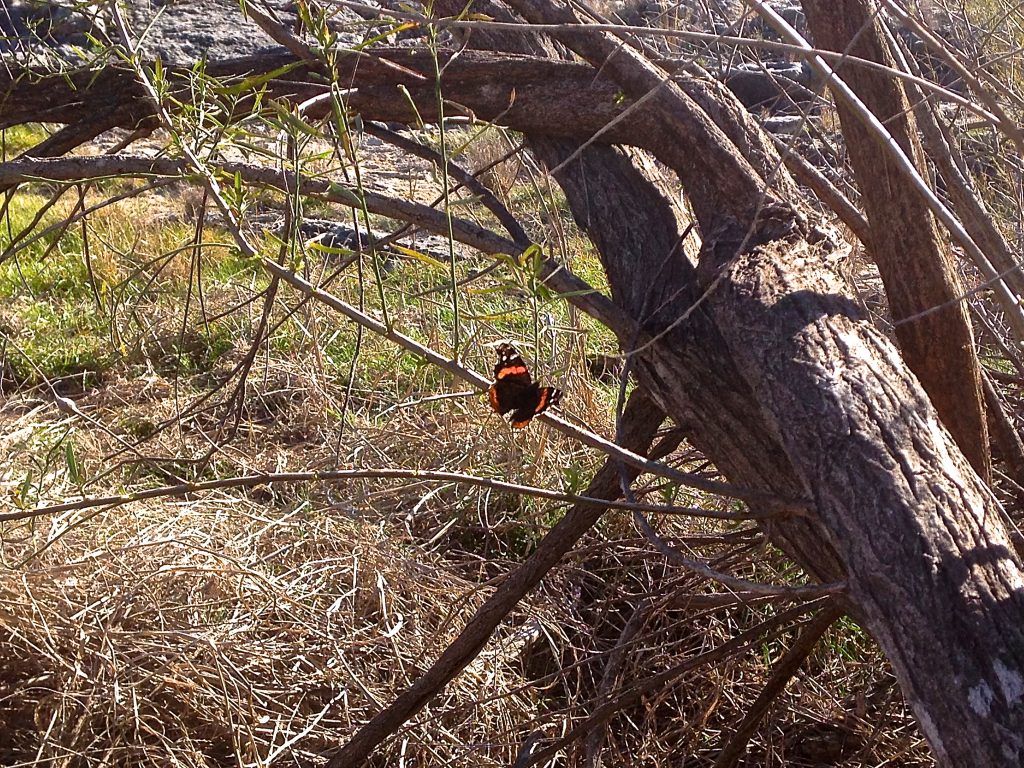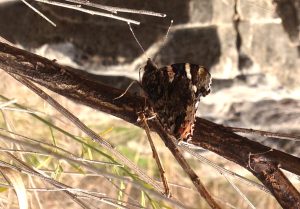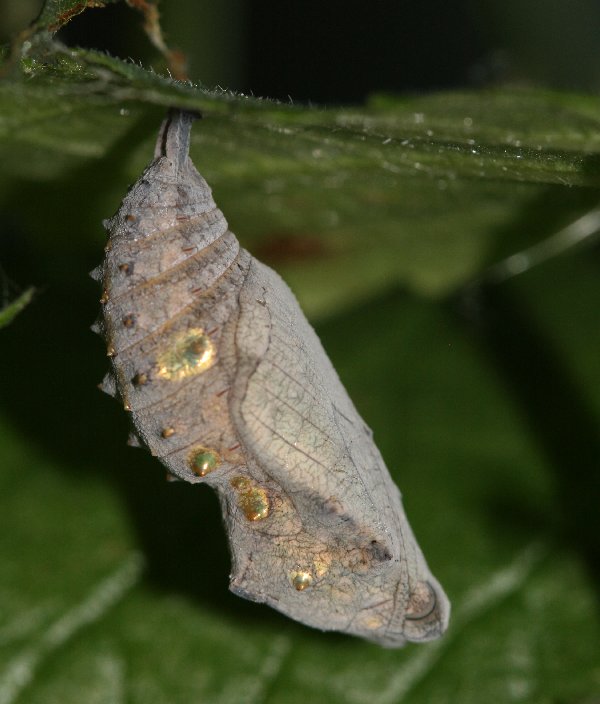While we’re waiting for Monarch butterflies to leave their roosts in Mexico and make their way through South Texas, let’s take a moment to appreciate Red Admirals, a striking butterfly that often kicks off the season in late winter and early spring.

Classic Red Admiral pose: resting on a tree limb. Photo by Monika Maeckle
Red Admirals, Vanessa atalanta, have black wings with a white stripe and a distinctive red epaulet when their wings are open; with wings closed, they sport a mottled look like their close cousin, the Painted Lady.
Red Admirals are unusual in that they prefer oozing sap, rotten fruit and even dung to flower nectar. Perhaps their preference for sap, made accessible to them thanks to woodpeckers and yellow-bellied sapsuckers poking holes in trees, explains their penchant for hanging out on the edges of woods.

With wings closed, Red Admirals sport a mottled coloration similar to Painted ladies. Photo by Monika Maeckle
They seem to be everywhere lately–lilting on the understory of brush, resting in tree limbs, puddling on damp ground or sunning on warm rocks. In Texas, Red Admirals show up early in the butterfly season. They host on pellitory and members of the nettles family. In the caterpillar stage, they appear blackish-grey with white flecks and harmless spikes. Their chrysalis looks like a twisted, gold-dusted dead leaf.
“Territorial males like to patrol and perch in the late summer afternoon, darting rapidly after anything to investigate possible females,” said Todd Stout, owner of Raising Butterflies and a past president of the Utah Lepidopterists’ Society.
Adults overwinter and migrate much like their Painted Lady cousins and have even been spotted migrating with Painted Ladies during hatches of the latter, said Stout. Check out Stout’s thorough account of the Red Admiral life cycle from egg to butterfly on his Raising Butterflies website.

Red Admiral chrysalis looks like a dead leaf with gold flecks. Photo by Todd Stout, Raising Butterflies.
Red Admirals also have a reputation as one of the “friendliest” butterfly species.
“Unmistakeable and unforgettable,” reads the description of Red Admirals in the National Audubon Society Field Guide to Butterflies of North America. “The Red Admiral will alight on a person’s shoulder day after day in a garden.” Stories of the small butterflies landing on shoulders, hats and fingers, “riding” with humans are not uncommon.
Connie Hodsdon, a commercial butterfly breeder and owner of Flutterby Gardens of Manatee in Florida, once told me that none of the many species in her massive butterfly garden is as friendly as Red Admirals.
Hodsdon relayed that she once was talking with a friend and pointed to a Red Admiral in her butterfly garden. “It landed on my finger,” said Hodsdon, who has been breeding butterflies for research, education and celebrations for more than a decade.
“When I reached for it with my other hand, it flew off. Thinking that what had just happened was a fluke, I put my finger out again and the butterfly came back and landed. This time, I just walked it back to the flight house and it rode on my finger all the way. ”
Hodsdon added that you can watch Red Admirals “cleaning their feet,” as the sap makes them sticky.
If you think you might enjoy raising Red Admirals at home, check out the free tutorials on how to do so made available by the International Butterfly Breeders Association, a trade and educational organization for hobbyist and commercial butterfly breeders.
Part I: https://vimeo.com/120015044
Part II: https://vimeo.com/120123630
Related posts:
- Friendly Red Admirals slurp sap in San Antonio, bode well for butterfly season
- How to plan a successful butterfly and pollinator garden
- Mostly native butterfly garden outperforms lawn every time
- A year in the life of an urban butterfly garden
- Downtown River walk plot converts to pollinator garden, creature haven
- Tropical Milkweed: To Plant it or Not is No Simple Question
- How to raise Eastern Swallowtails
- How to raise Monarch butterflies at home
Like what you’re reading? Don’t miss a single post from the Texas Butterfly Ranch. Sign up for email delivery, like us on Facebook, or follow us on Twitter, @monikam.

Leave A Comment